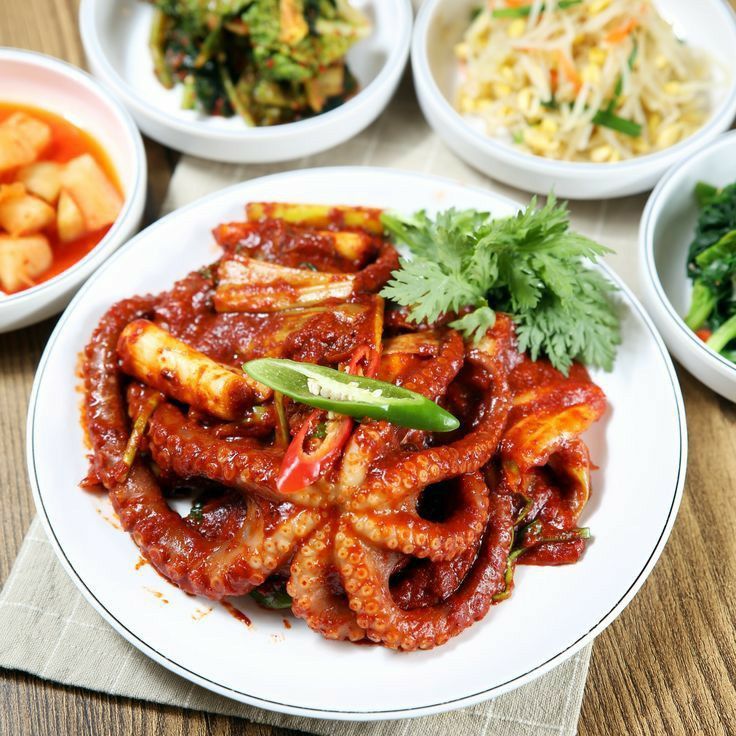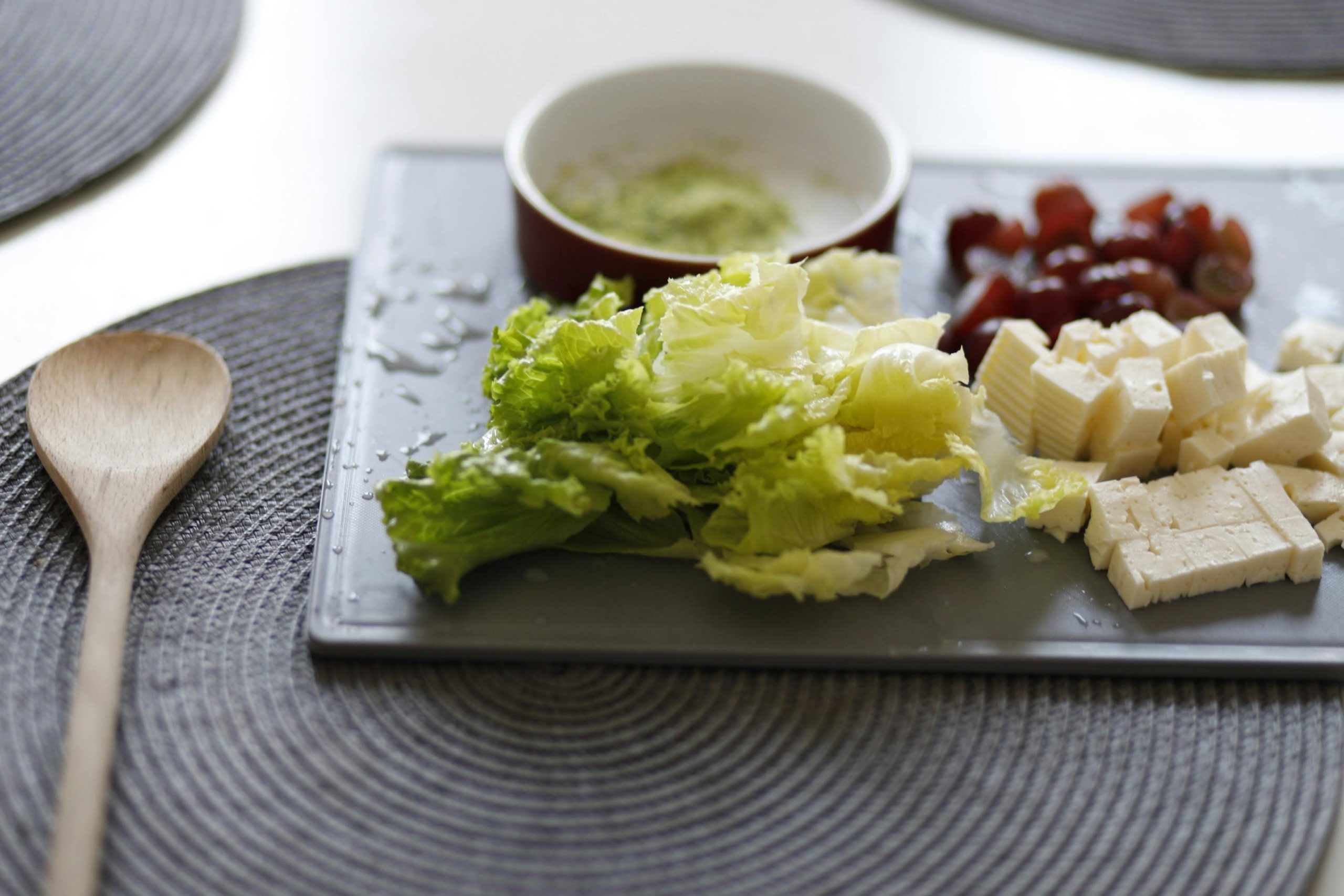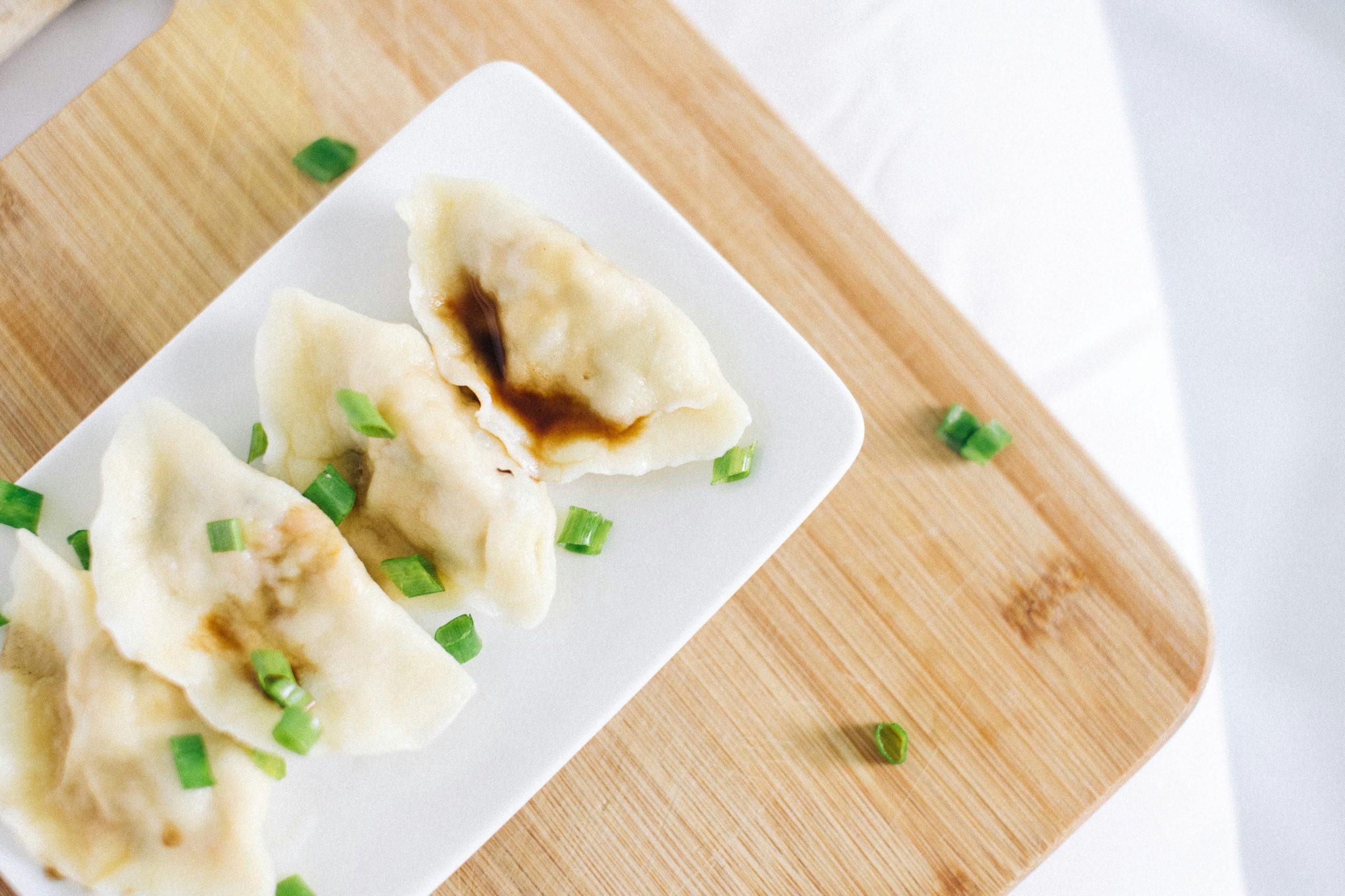Have you ever wondered what happens when the rich culinary traditions of China meet the refined flavours of Japan?
Navigating the vast array of dishes and styles can be overwhelming, especially when trying to distinguish between these two Asian culinary giants.
Chinese Japanese food, often known as ‘Chuka’, is a unique fusion where traditional Chinese dishes are adapted using Japanese ingredients and cooking techniques.
In this blog, we’ll delve into the fascinating world of Chinese Japanese cuisine, exploring everything from cooking styles and key differences to dining etiquette and popular dishes in both cultures.
Cooking Styles in Chinese and Japanese Cuisine

When it comes to cooking styles, Chinese and Japanese cuisines are both rich in tradition but differ significantly in their approaches. Chinese cuisine often involves techniques like stir-frying and deep-frying using a wok, which creates meals that are rich in flavor and texture. This method allows for a quick cook at high temperatures, making ingredients crispy on the outside while keeping them tender inside.
In contrast, Japanese cuisine emphasizes subtlety and natural flavors, often using methods such as grilling, boiling, and simmering. These techniques help to preserve the integrity and freshness of the ingredients, particularly seafood, which is a staple in Japanese cooking. The focus is on bringing out the inherent flavors of the ingredients without overwhelming them with strong spices or sauces.
Both cuisines also show a profound respect for the ingredients used, although the end results are markedly different due to the cooking techniques employed. While Chinese dishes are often bold and complex, Japanese dishes are known for their simplicity and elegance, making each bite an appreciation of the food’s natural taste.
Meat Selections in Chinese and Japanese Food

Chinese cuisine offers a broad spectrum of meat choices, ranging from the familiar like pork and chicken to more exotic options such as duck and even offal. This variety reflects the regional diversities within China and a culinary tradition that is not shy about experimenting with different textures and flavors. Dishes such as Peking duck and sweet and sour pork showcase the versatility in preparation and taste that Chinese cooking offers.
On the other hand, Japanese cuisine tends to focus more on seafood, owing to its geographical advantages. While beef, chicken, and pork are also used, the prominence of dishes like sushi and sashimi highlights a preference for fresh, raw seafood. This is not to say that meat isn’t enjoyed; rather, it is often prepared in ways that aim to enhance its natural flavors, such as grilling or simmering in a light broth.
Seasonings and Flavors: Chinese vs Japanese Cuisine
Chinese flavors are characterized by a bold blend of spices and seasonings including garlic, ginger, and Sichuan peppercorns, creating a taste profile that is both robust and memorable. The use of soy sauce, oyster sauce, and various fermented pastes adds depth and complexity to the dishes, often resulting in a sensory experience that is as aromatic as it is flavorful.
Contrastingly, Japanese seasonings are typically more reserved, focusing on enhancing the umami aspect of foods. Simple ingredients like soy sauce, miso, and mirin are used not to overpower but to uplift. The subtle use of spices and a preference for natural seasonings like wasabi and pickled ginger complement rather than dominate the primary ingredients.
Staple Foods in Chinese and Japanese Cuisine
Staple foods in both Chinese and Japanese cuisines include rice and noodles, but they are utilized differently. In Chinese cuisine, rice is often served plain as a side dish or stir-fried with vegetables and meat in dishes like fried rice. Noodles, on the other hand, might be stir-fried or served in a broth, as seen in the popular lao mian.
Japanese cuisine also holds rice in high regard, typically served plain alongside other dishes or used in sushi. Noodles such as ramen, udon, and soba play a significant role and are usually served in a broth or with a dipping sauce, reflecting a distinct approach to these staples that emphasizes subtlety and flavor balance.
Key Differences Between Chinese and Japanese Cuisine
Chinese and Japanese cuisines are often celebrated for their distinctive characteristics, yet they stem from a shared East Asian culinary heritage. Chinese cuisine is renowned for its diversity, using a broad spectrum of ingredients and bold flavour profiles. In contrast, Japanese cuisine typically focuses on the natural flavours of the ingredients, with a minimalist approach that highlights freshness and simplicity.
The cooking methods also show significant differences. Chinese food often features techniques like stir-frying in a wok and deep-frying, which impart rich flavours and textures. On the other hand, Japanese dishes are frequently prepared by grilling, boiling, or simmering, which tend to preserve the food’s original taste and are generally considered healthier.
Presentation is another area where these two cuisines diverge. Chinese meals are usually served in a communal style, encouraging a shared dining experience, where dishes are placed at the centre of the table. Japanese meals focus on individual presentation, often serving food in a series of meticulous, beautifully arranged dishes that enhance both the aesthetic and the flavour of the meal.
Surprising Similarities in Chinese and Japanese Cuisine
Despite their differences, Chinese and Japanese cuisines share several surprising similarities that reflect their cultural connections. Both cuisines make extensive use of rice and noodles, staples that are central to meals across both countries. Additionally, the importance of freshness in ingredients like fish, vegetables, and meat is paramount in both cultures, ensuring that the flavours are authentic and vivid.
Another notable similarity is the use of soy sauce, a critical condiment that seasons and enhances a variety of dishes in both cuisines. While the specific types and flavours of soy sauce may vary, its fundamental role in cooking and as a table-side condiment is consistent across both Chinese and Japanese food. This shared use underscores a mutual culinary foundation that transcends the distinct identities of each cuisine.
Dining Etiquette in Chinese and Japanese Cultures
Dining etiquette plays a crucial role in both Chinese and Japanese cultures, reflecting deep-seated values and respect for tradition. In China, meals are often enjoyed in silence, which is seen as a sign of respect and allows guests to savour the flavours of the food. Conversely, in Japan, particularly in noodle restaurants, making noise while eating noodles is considered polite. It indicates that the food is delicious and shows appreciation to the chef, a practice that might surprise those unfamiliar with Japanese customs.
The approach to eating sushi in Japan also highlights unique aspects of dining etiquette. Unlike in many cultures where sushi might be eaten with chopsticks, Japanese chefs often expect it to be eaten with the hands. This method is thought to enhance the personal connection with the food, embracing its texture and temperature directly. Moreover, the Japanese practice of cleaning the plate completely, adhering to the belief that leaving rice grains is disrespectful, contrasts sharply with Chinese dining, where leaving some food is a gesture of the meal’s abundance and the host’s generosity.
Chuka: The Japanese Twist on Chinese Cuisine
Chuka, or Japanese-style Chinese cuisine, represents a fascinating culinary blend that originated as Japan’s local adaptation of Chinese food. This fusion began when Japanese chefs took traditional Chinese recipes and reimagined them with local ingredients and flavours to suit the Japanese palate. The result is a cuisine that, while rooted in Chinese traditions, offers a distinctly Japanese taste experience.
Among the popular dishes in Chuka cuisine are:
- Ramen, where the broth and toppings have been adjusted to Japanese tastes.
- Gyoza, which are dumplings filled with ingredients like pork, cabbage, and garlic, adapted to be lighter than their Chinese counterparts.
- Mapo Tofu, which is less spicy and oily in its Japanese version, making it subtly flavoured while retaining the essence of the original dish.
What sets Chuka apart from traditional Chinese food is not just the adjustment of flavours but also the method of presentation and ingredient selection. The Japanese approach often involves a more delicate and refined presentation, and the use of local, seasonal ingredients that align with the Japanese culinary principle of shun, which emphasises the importance of seasonal produce. This adaptation not only respects the original Chinese culinary art but also celebrates Japanese gastronomic principles.
Chinese Restaurants in Japan: A Culinary Exploration
Chinese restaurants in Japan offer a unique blend of culinary traditions, often located in bustling city centres like Tokyo and Osaka. These establishments range from high-end luxury dining options to casual street food stalls, each presenting a different aspect of Chinese cuisine. Popular spots often include multilingual menus, catering to both locals and tourists alike.
The offerings at these restaurants can vary widely, but some common dishes include ramen with a Chinese twist, dim sum, and Peking duck. Many of these restaurants also adapt their recipes to suit the local palate, making the dishes less oily and mildly spiced compared to their original versions in China. This adaptation not only respects the original Chinese culinary art but also celebrates Japanese gastronomic principles.
Ramen: A Staple in Chinese and Japanese Food
Ramen, originally from China, has become a beloved staple in both Chinese and Japanese food cultures. In Japan, it has evolved into various regional styles, each with unique broths, noodles, and toppings. This evolution highlights the adaptability of ramen, seamlessly blending into the local culinary landscape while maintaining its core identity as a comforting bowl of noodles.
In Chinese cuisine, ramen is often seen as a quick, satisfying meal, reflecting the bustling urban life. Variations include different broths and ingredients tailored to regional tastes. In contrast, the Japanese adaptation, deeply integrated into Japanese food culture, focuses on the refinement of flavours and presentation, showcasing the meticulous attention to detail that Japanese cuisine is known for.
Dim Sum in Japanese Cuisine: A Unique Culinary Experience
In Japan, dim sum takes on a unique form, diverging from its traditional roots in Chinese cuisine. Commonly found items like shumai and nikuman reflect the adaptation to local tastes, often featuring ingredients that cater to the Japanese palate. Unlike the typical bustling dim sum halls of Hong Kong, in Japan, these dishes are frequently enjoyed in quieter, more reserved settings, often as part of a takeout meal or in smaller, cafe-style eateries.
Some popular adaptations of dim sum in Japan include steamed buns filled with pork or sweet red bean paste and xiaolongbao (steamed soup dumplings) with a less spicy broth tailored to local preferences. These items not only showcase the culinary fusion between Chinese and Japanese flavours but also highlight the Japanese emphasis on delicate, subtle tastes in their version of these beloved dishes.
Discover Chinese Japanese Food with INDULGE‘s Culinary Tours
If you’re intrigued by the unique blend of Chinese and Japanese cuisines, INDULGE‘s culinary tours in Zurich present a perfect opportunity. These tours are expertly curated to introduce participants to a fusion of flavours that characterise both Chinese and Japanese dishes. By participating, you’ll embark on a gastronomic journey that highlights the subtle artistry and bold flavours of these Asian culinary giants.
Beyond just tasting, these tours offer a deep dive into the culinary histories and techniques that define Chinese and Japanese cooking. You’ll experience:
- Live cooking demonstrations that showcase traditional and fusion cooking methods.
- Interactive sessions with expert chefs who explain the nuances of combining these two rich food cultures.
- An exploration of local ingredients that are pivotal in creating the authentic taste of Chinese-Japanese fusion cuisine.
Frequently Asked Questions
What is Japanese Chinese food called?
Japanese Chinese food is often known as ‘Chuka’. This unique fusion involves traditional Chinese dishes being adapted using Japanese ingredients and cooking techniques.
Are Chinese and Japanese food similar?
Chinese and Japanese cuisines both celebrate their distinctive characteristics but also share a common East Asian culinary heritage. While they have differences in cooking methods, flavours, and presentation, they also have similarities such as the extensive use of rice and noodles, the importance of fresh ingredients, and the use of soy sauce as a fundamental seasoning in both cuisines.
Is ramen considered Chinese food in Japan?
Ramen, originally from China, has become a beloved staple in both Chinese and Japanese food cultures. In Japan, it has evolved into various regional styles, showcasing the meticulous attention to detail that Japanese cuisine is known for. Therefore, while it has its origins in Chinese cuisine, ramen is deeply integrated into Japanese food culture and is considered part of it.
What are 5 Chinese foods?
Five popular Chinese dishes include Peking duck, sweet and sour pork, fried rice, lao mian (a type of noodle dish), and dim sum. These dishes reflect the variety and rich flavour profiles characteristic of Chinese cuisine.








